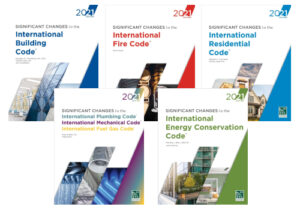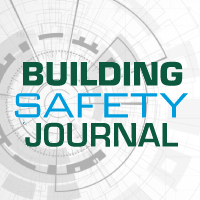
Significant changes to type IV connection protection in the 2021 International Building Code
![]() An addition to Section 110.3.5 (Type IV Connection Protection) of the 2021 International Building Code states that a new inspection has been established, applicable only to Type IV-A, IV-B and IV-C construction, that deals with connections where fire-resistance is provided by wood cover.
An addition to Section 110.3.5 (Type IV Connection Protection) of the 2021 International Building Code states that a new inspection has been established, applicable only to Type IV-A, IV-B and IV-C construction, that deals with connections where fire-resistance is provided by wood cover.
The inspection function is arguably the most critical aspect of building department operations. As the construction process moves forward, specified inspections of the work being done must be completed prior to such work becoming concealed and inaccessible for evaluation. A listing of the required inspections, where applicable, begins with a potential preliminary inspection and continues through various stages of the work, ending with a final inspection. The scope of each inspection is indicated and the extent of work to be available for inspection is provided. A new inspection has been established, applicable only to mass timber construction of Types IV-A, IV-B and IV-C, that deals with connections where fire-resistance is provided by wood cover.
Connections of structural members, and their protection to achieve a fire-resistance rating, represent a significant component of mass timber buildings’ structural integrity, and therefore warrant a specific new requirement for building department inspections. Special inspections are not required for this aspect of construction as this field inspection process does not require any special expertise nor special tools for testing that are outside the day-to-day work of building inspectors. These new requirements are parallel to, and generally the same as, the inspection of fire-resistive protection for connections of traditional heavy timber that have been done in the course of building department inspections for more than 100 years. This mandate does not preclude the building official from requiring special inspections in special cases as established in Section 1705.1.1.
It is likely that designers will choose to overlay wood connections using additional wood cover that will protect the underlying wood and steel. This additional thickness of wood can be provided by oversizing the structural element or by adding a collar or other architectural embellishment at the connection. For oversized wood structural elements, the inspector will need to check the approved building plans to determine the required dimensions of the oversized structural element to be used to meet the fire-resistance rating. Where the plans indicate the addition of wood members to protect the connection, the inspector will need to verify that the additional wood members are in place and meet the minimum dimensions set forth in the approved construction documents.
Section 110.3.5, now reformatted as Section 110.3.6, has historically required the inspection of gypsum board when used as a component of fire-resistance-rated assemblies. The connection being protected may be steel-to-mass timber, concrete-to-mass timber, or any other combination of materials. Gypsum board is assigned a fire-resistance-rating time based on board thickness and other performance properties of the product, such as a Type X certification. When the connection protection calls for the addition of gypsum board to add fire-resistance time, the thickness, number of layers and other properties should be inspected.
Read the full significant change.
![]()
 The 2021 Significant Changes guides are available for the International Building, Fire, Residential, Energy Conservation, Plumbing, Mechanical and Fuel Gas Codes. This valuable series can help any code user save time by zeroing in on the most critical changes in the 2021 International Codes. The Code Council’s technical experts provide summaries, analysis and graphics for these changes making them clear and easy to understand. Each edition provides a comprehensive analysis of significant changes since the 2018 edition, offering key insights into its contents and implications. Each change analysis features the affected code sections and identifies the change with strikethroughs and underlines to show modifications to the existing language. Each change is accompanied by a quick summary, detailed illustrations, and a discussion of its significance, which brings the technical jargon of the code to life in a real-world setting.
The 2021 Significant Changes guides are available for the International Building, Fire, Residential, Energy Conservation, Plumbing, Mechanical and Fuel Gas Codes. This valuable series can help any code user save time by zeroing in on the most critical changes in the 2021 International Codes. The Code Council’s technical experts provide summaries, analysis and graphics for these changes making them clear and easy to understand. Each edition provides a comprehensive analysis of significant changes since the 2018 edition, offering key insights into its contents and implications. Each change analysis features the affected code sections and identifies the change with strikethroughs and underlines to show modifications to the existing language. Each change is accompanied by a quick summary, detailed illustrations, and a discussion of its significance, which brings the technical jargon of the code to life in a real-world setting.
Significant Changes to the International Building Code, 2021 Edition is available in the ICC Store or through Digital Codes Premium.








